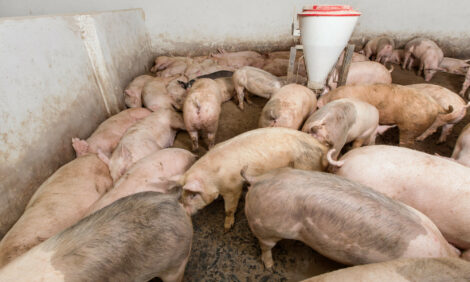



Pork Market Policies in Japan
By U.S.D.A., ERS - Japan is one of the leading agricultural importing nations in the world. This article is one in a series examining Japan’s policies that protect and regulate its agricultural markets.| Abstract |

|
Regional pork production funds provide deficiency payments to farmers according to rules that vary by prefecture. Funding comes from producer checkoff payments and from regional and national governments. The national government also subsidizes disaster insurance premiums.
At the border, imports confront the gate price system, which imposes a minimum import price on pork shipments. For shipments valued below the minimum price, importers must pay the difference between the shipment’s value and the minimum price.
The system taxes the importation of lower-valued pork cuts. Pork can only be imported from countries that are free of foot-and-mouth and certain other diseases.
Pork producer prices in Japan are roughly twice the U.S. level, partly because of the gate price system. Consumer prices are also significantly higher than in the United States.
| Introduction |
Japan is one of the leading agricultural importing
nations in the world.
This article is one in a series
examining Japan’s policies that protect and regulate its
agricultural markets. These policies are of special interest
because they are subject to review in the current
round of global trade negotiations conducted by the
World Trade Organization (WTO).
Japan is the world’s largest importer of pork in most
years, and domestic production, based on imported
feedstuffs, is also important. Consumption of pork has
been stable in recent years, but production has been
declining gradually since 1989, leading to increasing
imports (fig. 1).

Pork, the leading meat consumed in Japan, competes with beef and with other protein sources for consumer attention. In recent years, consumption has been relatively stable at about 2.2 million tons (carcass-weight equivalent), or 10.2 kg per person annually (boneless weight—about 22.5 lb).
Fresh or chilled pork is purchased by Japanese households for cooking at home. This kind of consumption has been declining as consumers have increasingly turned to buying food away from home, or to buying processed products that offer convenience in preparation. The restaurant sector is a major consumer of frozen and chilled pork for use in entrees. A large industry also manufactures hams and other processed products, using frozen pork as the raw material.
In 2000, the value of Japan’s domestic hog output was estimated at over 465 billion yen ($4.34 billion, a little over 5 percent of total agricultural output). This value declined during the 1990s from an output value of over 640 billion yen in 1991.²
Over the same period, the volume of domestic pork produced fell by over 13 percent. The decline was interrupted in 1997, as the sudden withdrawal of exports from Taiwan, formerly Japan’s leading foreign source of pork, allowed domestic prices to rise and stimulated production.³
However, by 2001, production was again below the level of 1996, and further declines can be expected, since Japan’s pork sector is handicapped in competition against pork imports by the cost of transporting imported feedstuffs, relatively high labor costs, and problems in finding sites for large hog farms and large processing plants that could achieve economies of size. In 2001, imports represented 44 percent of the total quantity marketed in Japan.4
To read this full 16 page pdf report Click Here
² Ministry of Agriculture, Forestry and Fisheries. Statistical Yearbook, 1999-2000, p. 555.
³ Taiwan’s exports ceased after a serious outbreak of foot-and-mouth disease.
4 Agriculture & Livestock Industries Corporation, Sept. 2002, p. 15.
This article is part of a project jointly conducted by the FAS Tokyo office and ERS.
Source: U.S.D.A., ERS - March 2003








